#New Testament apostles
Explore tagged Tumblr posts
Text
Signs of a True Apostle According to the Bible
Signs of a True Apostle According to the Bible Introduction: Understanding Apostleship in the Bible We are living in a time when almost every minister, whether pastoring a church, possessing the gift of prophecy, or engaging in gospel work, labels themselves as apostles. This trend is both absurd and belittling to the true office of an apostle. Apostleship, as defined in the Bible, is a unique…
#apostolic authority#apostolic foundation#apostolic ministry#apostolic teachings#biblical apostleship#Christian leadership#church planting#false apostles#gospel preaching#New Testament apostles#Paul’s apostleship#qualifications of apostles#signs of a true apostle#sound doctrine#spiritual discernment#true apostle#Unity in faith
0 notes
Text






bibleverse bibleverse bibleverse ...
#the bible#bible art#bibleverse#new testament#judas#judas iscariot#jesus#jesus christ#mary magdalene#john the apostle#john the beloved#so uh yeah#is that twink Judas???#YES AND NO ONE CAN STOP ME OKAY#art#they're gonna be SO gay and SO tragic#wait they already are#judas is silly#also sorry for not posting i got rly sick...
61 notes
·
View notes
Text

The Apostle Paul
Artist: Rembrandt van Rijn (Dutch, 1606-1669)
Date: 1657
Medium: Oil on Canvas
Collection: National Gallery of Art, Washington, DC, United States
OVERVIEW
Throughout his life Rembrandt was fascinated by the apostle Paul, perhaps because Paul’s writings were the most important source for Reformation theology, or perhaps because he personified the Christian ideal of grace received independently of merit. Sitting at a table in his prison cell, the apostle ponders the words he is about to write in the epistle that lies before him. The solemn expression of Paul’s strong features underscores the depth of his belief and sense of purpose in his mission to spread Christianity to the heathens. The sword visible above the book is as much the "sword of the Spirit," the term he used to describe the word of God in his letter to the Ephesians, as it is the symbol of his military prowess before his conversion and the sign of his eventual beheading and martyrdom. The gentle light that illuminates Paul’s head, hand, and epistle has no defined point of origin. By depicting Paul at half length rather than full length, Rembrandt has brought the viewer closer to the figure of the saint, whose intensity of expression is keenly felt.
#painting#oil on canvas#rembrant van rijn#new testament#biblical art#christianity#epistles#apostle paul#dutch painter#european art#prison#table#book#writer#christian art
105 notes
·
View notes
Text

Title: The Baptism of the Eunuch Artist: Rembrandt van Rijn (Dutch, 1606-1669) Date: 1626 Genre: religious art Period: Dutch Golden Age Medium: oil on panel Dimensions: 64 cm (25 in) high x 47.5 cm (18.7 in) wide Location: Museum Catharijneconvent, Utrecht, Netherlands
#art#art history#Rembrandt#Rembrandt van Rijn#religious art#Biblical art#Christian art#Christianity#New Testament#Book of Acts#Acts of the Apostles#Dutch Golden Age#Baroque#Baroque art#Dutch Baroque#Dutch art#17th century art#oil on panel#Museum Catharijneconvent
68 notes
·
View notes
Text

Apostle Thomas (I gave up on his hands my bad)
54 notes
·
View notes
Text
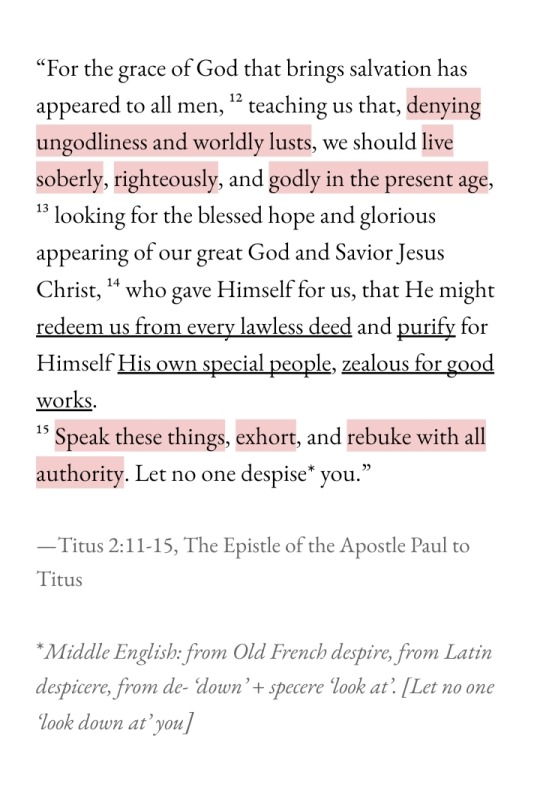
#bible verse#Titus#Christianity#new testament#bible study#bible reading#paul the apostle#christian community#christian encouragement#christian motivation#christian quotes#christian#christians#biblical scripture#scripture#bible scripture#God#Jesus Christ#Holy Spirit#holy bible#holy scripture#christian blog#bible#bible verse of the day#verse of the day#life quotes#man of God#faith#faith in God#christian women
134 notes
·
View notes
Text
there's just something about john vs judas. the beloved vs the betrayer. the witness vs the instigator. the insider vs the outsider. the hug vs the kiss. being the last to die vs the first. graced by god vs praised be god.
#not the first or the last to make these comparisons#but thoughts are being had#john the apostle#judas iscariot#christianity#religion#new testament#bible#scripture#the beloved disciple#the disciple whom jesus loved#the betrayer#jesus' disciples
206 notes
·
View notes
Text
youtube
The Ministry Of Jesus Christ - Edit
Created by Orthodox Memes Squad Channel from YouTube.
After eight years, the moment has finally come! This year, Easter is celebrated together (Orthodox, Catholics and Protestants) from both calendars, so I wish everyone who celebrates a happy Easter! This video shows the action of Jesus Christ from his baptism, through his miracles and his teachings to his death and resurrection speaks volumes. Also, many films have been made about Jesus Christ, which you can see in this video.
Of course, this is more for those who are Christian believers. I also wish you a happy Easter. P.S. I love most of the movies shown here about Jesus Christ, no matter what he really looked like.
If anyone asks what the song is, it's called "Grow, grow, my green pine!"
I wish everyone a happy Easter, the day when Jesus Christ defeated death, the devil and forgave the sins of humanity! Glory to God! Jesus is risen!
#easter#happy easter#video clip#youtube#religion#christianity#jesus christ#bible#new testament#orthodox memes squad#orthodoxy#catholic#protestantism#passion of christ#son of god#chosen#jesus of nazareth#jesus gospel of john#jesus gospel of luke#gospel of luke#gospel of john#movies#christ#christ is risen#apostles#miracles of jesus#john the baptist#virgin mary#others#pasqua
6 notes
·
View notes
Text
DNI: Anti-religion, ableist or nsfw
1 Corinthians 6:12
12 “I have the right to do anything,” you say—but not everything is beneficial. “I have the right to do anything”—but I will not be mastered by anything.

Let us dwell in Christ alone for He whom redeemed us also creates a new identity for those who are born again.
2 Corinthians 5:14-17
14 For Christ’s love compels us, because we are convinced that one died for all, and therefore all died. 15 And he died for all, that those who live should no longer live for themselves but for him who died for them and was raised again. 16 So from now on we regard no one from a worldly point of view. Though we once regarded Christ in this way, we do so no longer. 17 Therefore, if anyone is in Christ, the new creation has come: The old has gone, the new is here!
#dollz#christian faith#faith#faith in jesus#faith in god#jesus christ#jesus#salvation#christianity#bible#bible verse#bible quote#new testament#apostle paul#bible scripture#christian blog#alternative#alt girl#alt aesthetic#vkeistyle#vkei#religion#egl#gothic lolita#old school lolita#goth aesthetic#y2k aesthetic#y2k#y2kcore#cyber y2k
25 notes
·
View notes
Text
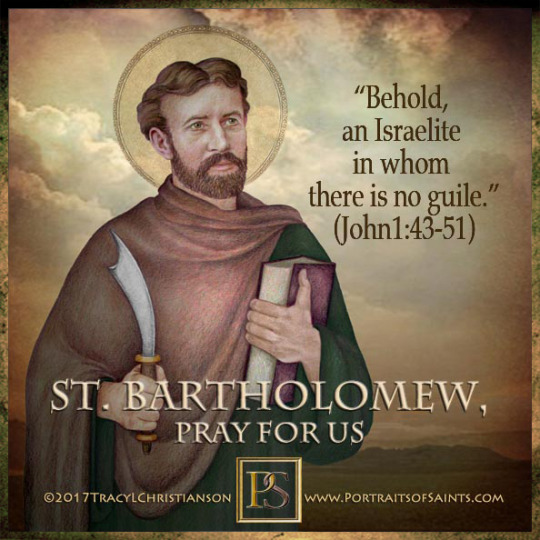
Saint Bartholomew the Apostle
1st C. Feast Day: August 24 Patronage: against neurological disease, bookbinders, butchers, shoemakers, leather workers and tanners, plasterers, Florentine cheese and salt merchants, Armenia
Saint Bartholomew, one of the twelve Apostles, was introduced by St. Philip to Jesus, who said “Behold, an Israelite in whom there is no guile.” (John1:43-51) His name means “son of Tolomai” and he preached the Gospel in India, Mesopotamia, and Armenia. St. Bartholomew was martyred by being flayed and beheaded. His relics are in Rome, Sicily, and Benevento, Italy, Frankfurt, Germany and Canterbury, England.
Prints, plaques & holy cards available for purchase here: (website)
59 notes
·
View notes
Text

The Resurrection of Jesus
1 But on the first day of the week, at dawn, they came to the place where his body had been put, taking the spices which they had got ready. 2 And they saw that the stone had been rolled away. 3 And they went in, but the body of the Lord Jesus was not there. 4 And while they were in doubt about it, they saw two men in shining clothing by them: 5 And while their faces were bent down to the earth in fear, these said to them, Why are you looking for the living among the dead? 6 He is not here, he has come back to life: have in mind what he said to you when he was still in Galilee, saying, 7 The Son of man will be given up into the hands of evil-doers, and be put to death on the cross, and on the third day he will come back to life. 8 And his words came back into their minds, 9 And they went away from that place and gave an account of all these things to the eleven disciples and all the others. 10 Now they were Mary Magdalene, and Joanna, and Mary, the mother of James: and the other women with them said these things to the Apostles. 11 But these words seemed foolish to them, and they had no belief in them. 12 But Peter got up and went to the place where the body had been put, and looking in he saw nothing but the linen cloths, and he went to his house full of wonder at what had taken place. — Luke 24:1-12 | Bible in Basic English (BBE) The Bible in Basic English is in the public domain. Cross References: Matthew 16:21; Matthew 17:22; Matthew 27:56; Matthew 28:1-2; Mark 6:30; Mark 9:30; Mark 16:1; Mark 16:11; Mark 16:13-14; Luke 2:9; Luke 7:13; Luke 24:1; Luke 24:3; Luke 24:8,9 and 10; John 2:22; John 19:40; John 20:3; Acts 1:21; Acts 2:24; Galatians 2:15; Revelation 1:18
#Jesus#resurrection#empty tomb#Mary Magdalene#Joanna#Mary (mother of James)#report#apostles#disbelief#Gospel of Luke#Luke 24:1-12#New Testament#BBE#Bible in Basic English
41 notes
·
View notes
Text


- How did you get here? - I went to the parish, and they directed me. - You found it so easily. - I`m good at that.
#the guest#ocn the guest#kim dong wook#kim jae wook#yoon hwa pyung#choi yoon#Their reactions to each other's homes are so different#Hwa Pyung looks on curiously Yoon with a sad realization of Hwa Pyung's loneliness.#It's amazing that their apartments are similar and different at the same time just like themselves#Hear that sound? It's the sound of Yoon's idea of Hwa Pyung being shattered every time he learns a new fact about him#Oh this self-confident stubborn self-centered impudent... soft empathetic caring...lonely traumatized... my friend.#Let's also talk about the fact that Hwa Pyung's Christian name is Emanuel the Old Testament name of the Messia#And Choi Yoon's Christian name is Mateo which literally means gift of God and is also the name of one of the twelve apostles of Jesus.
13 notes
·
View notes
Text

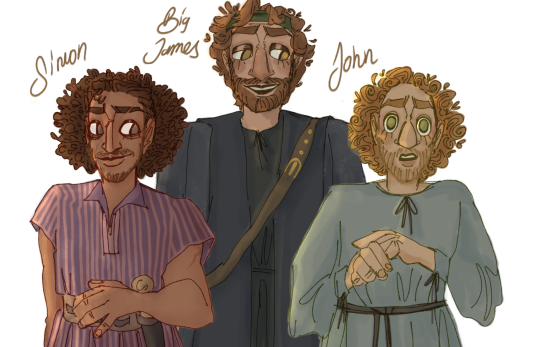

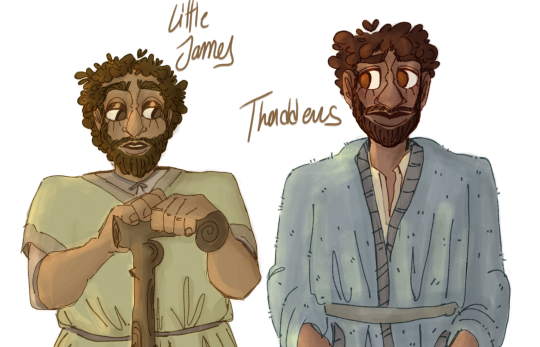

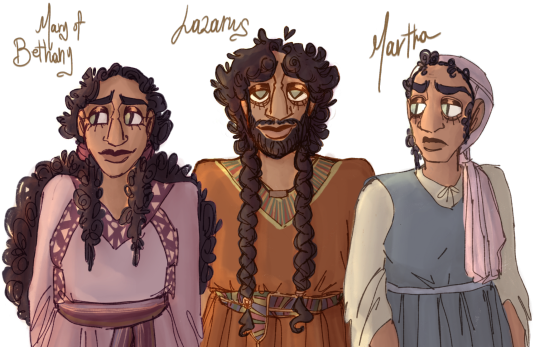
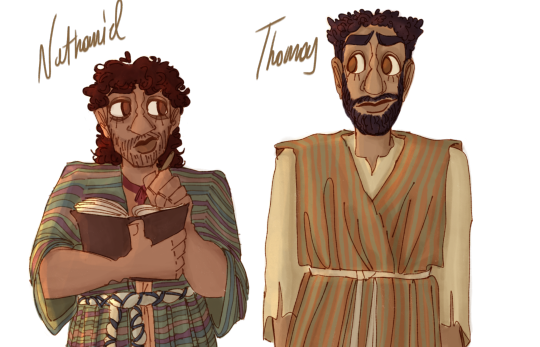
(coming out of the tomb three days later covered in blood sweat and tears) never doubt the power of friendship
#EVERYBODY CHEER I DID THE APOSTLE DESIGNS. actual insanity.#there is something very weird going on at tumblr dot com slash dolokhoded.#god spoke to me. while making these. so like just trust me bro with characterization.#cause they're gonna be around probably.#im not religious just insane.jpg#remember when i had an art tag#the new testament is my favorite work of fiction.#this one does not do my judas design justice. but I am DONE with these imcjust throwing him in#there will be plenty of better judas examples anyway
30 notes
·
View notes
Text

The Miracles of Saint James the Greater
Artist: Noël Nicolas Coypel (French, 1690–1734)
Date: 1726
Medium: Oil on canvas
Collection: Cleveland Museum of Art, Cleveland, Ohio, United States
Description
Noël Nicolas Coypel combined two stories associated with Saint James the Greater, one of the twelve apostles of Christ. In the foreground is the magician Hermogenes, begging forgiveness. Hermogenes had cast a spell on James, but the saint turned the curse back on him. When James offered to protect Hermogenes against the demons assaulting him, the magician cast aside his pagan texts in favor of Christianity. James also miraculously cured a paralytic man (in the middle ground at right), thereby averting his own execution and causing the prosecutor to convert. Although this painting is relatively small, the clear composition, grand architectural setting, and dignified and expressive poses of the figures endow it with monumental presence.
#painting#biblical scene#saint james the greater#christianity#hermogenes#cure miracle#paralytic man#architecture#new testament#jesus' apostle#men#french culture#oil on canvas#fine art#oil painting#artwork#cleveland museum of art#french painter#noel nicolas coypel#french art#18th century painting
38 notes
·
View notes
Text
Yes yes Problems with Paul, but remember when he wrote this in his letter to the Corinthians
But some of you, thinking that I am not coming to you, have become arrogant. But I will come to you soon, if the Lord wills, and I will find out not the talk of these arrogant people but their power. For the kingdom of God depends not on talk but on power. What would you prefer? Am I to come to you with a stick or with love in a spirit of gentleness?
1 Corinthians 4:18-21
Literally:
🎶 I heard that you were talking shit and you didn’t think that I would hear it 🍌
Do you bite or are you all bark?? The “bitch” here is silent but we see it.
What would you prefer? Violence? Are you going to choose violence?!
Paul was mad as hell writing this letter omfg
#Apollos is a bitch Cephas is a bitch#Mocks them for thinking they’re wise and exalted#Paul is not here to play games. Paul is sending Timothy to get your shit together#1 corinthians#the Bible#scripture#st paul#Christian#christianity#🦌#new testament#paul the apostle
3 notes
·
View notes
Text
the phrase 'god-given name' is so funny to me because it's often used to refer to your name from birth but let me tell you about all the people in the bible who were given names by God and how many of those names were NOT the one they were born with
#some of you have somehow missed the apostle paul which is wild cause he made damn sure he was difficult to miss#guy who wrote half the new testament had a name change mid-life and you're telling me the name my parents gave me as a baby is 'god-given'#i disagree#godblr#not metaphysics posting#bible posting
11 notes
·
View notes